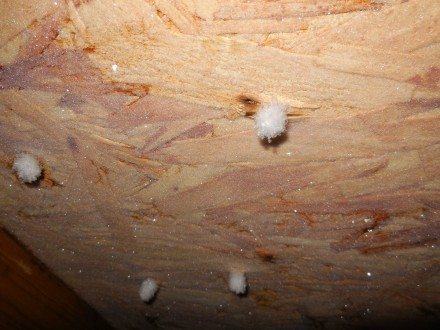Frost Unheated Attic Wall

An alternative for such issue is to design a horizontal layer placed under the foundation of the entire building.
Frost unheated attic wall. This frost could lead to mold in your attic another problem. The frost wall explained in above case provides warmth for the building only if the building constructed is a heated building. The frost in your attic indicates that you may need better ventilation out your roof. Also it s close to a soffit vent and it was windy when the frost formed.
The first room when you walk in to the house from the garage is a. Frost protection of an insulated foundation also works for an unheated building by conserving ground geothermal heat beneath the building. Bonus rooms are often the least comfortable room in a house and the main reason is that they are the most flawed part of the building envelope especially the attic kneewalls. Yesterday i was doing a home energy rating for quality assurance in augusta georgia and the house i was in had a bonus room.
Not sure where exactly to insulate. But plumbing pipes in an unheated area such as an attic crawl space and garage are at risk of freezing. Insulation is measured in r values or resistance to heat. That still won t prevent the moisture mold in your unheated bedroom.
In the photo at left the kneewall is the short wall with the door in it. A ridge vent could accomplish this. Check your insulation zone before adding any insulation in unheated areas. Unheated areas of homes.
In addition to walls and attics insulation should be installed in ceilings with unheated spaces basement walls floors above vented crawl spaces cathedral ceilings floors over unheated garages or porches knee walls and in between interior walls especially bathrooms as well as ceilings and floors. Often inexpensive foam pipe insulation is enough for moderately cold climates. Frost and ice forms in attics when warm humid air accumulates and condenses on the underside of your roof sheathing. Exposed interior plumbing exposed pipes in the basement are rarely in danger of freezing because they are in a heated portion of the home.
Depending on the temperature and the insolation ie. This type of frost wall won t work for an unheated building type. I believe the cause is heat loss into the garage. I suggested he turn off the humidifier on the furnace and control the rh in his house to help with the condensation.
Can sun get to the roof you will have either frost or water collecting. I also recommended insulating the rim joist adjacent to the garage with foam. Only reducing your interior moisture levels will help. Frost penetration into the ground under various conditions the effect of heat from the building is magnified when insulation is strategically placed around the foundation.
Probably in more place than you think. The other factor is the high humidity in the home.














































